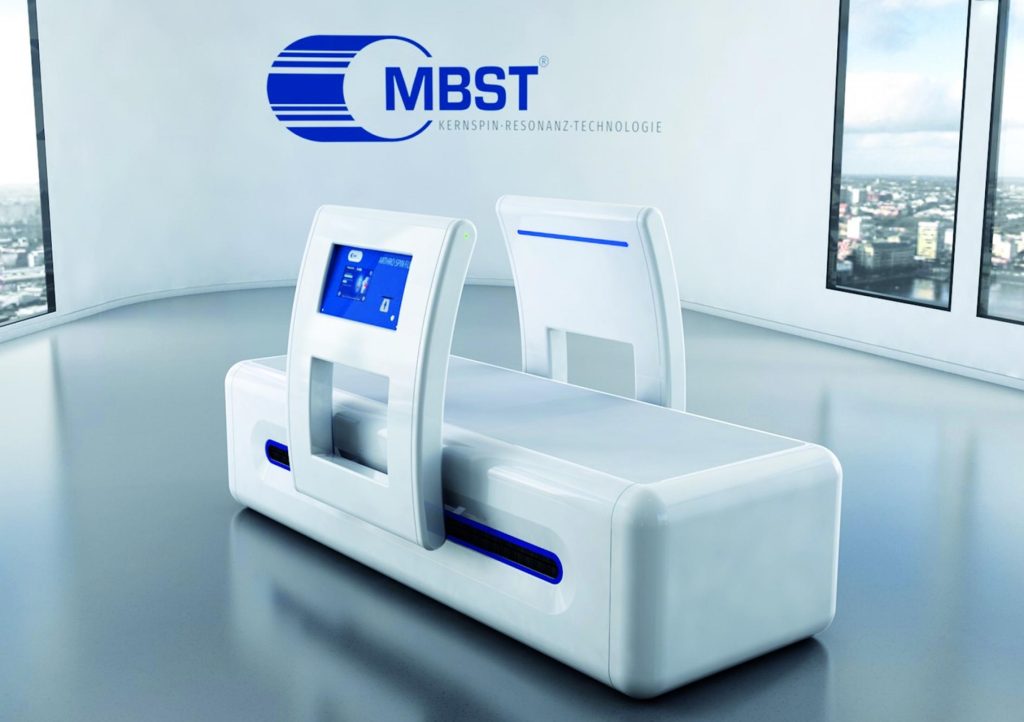The physical phenomenon of nuclear magnetic resonance was first described by Felix Bloch and Edward Purcell in 1946. It states that atomic nuclei that are activated by electromagnetic fields become measurable sources of energy themselves. They were awarded with a Nobel Prize in Physics for their research in 1952.
20 years later, the technology was further developed through the inventions of Paul C. Lauterbur and Sir Peter Mansfield, among others, so it became possible to use nuclear magnetic resonance to visualize spatial structures. Today, magnetic resonance imaging allows the gently visualization of changes and diseases of organs without the use of X-rays. However, the actual use of imaging techniques in medical diagnostics did not begin until the early 1980s. Magnetic resonance imaging (MRI) revolutionized radiological diagnostics. Worldwide, more than 60 million MRI examinations are carried out every year.
The spinning core
Put simply, the procedure uses the fact, that the distribution of hydrogen atoms in the human body varies. In a strong magnetic resonance field that surrounds the patient lying in a tube, the atoms, which normally vibrate in a disordered manner, realign themselves. In doing so, they absorb energy. They release some of this energy again after the magnetic resonance field is switched off. These signals are measured and converted into images.
What sounds very simple at first is an extremely complex technology that makes use of certain biophysical properties of atomic nuclei. Atomic nuclei with an odd number of nucleons have the property of nuclear spin, i.e. they have an intrinsic angular momentum (“spin”).
The simplest atomic nucleus with an odd number of nucleons that generates a magnetic field is the hydrogen nucleus which has only one proton. The hydrogen atom is by far the most common atom in the human organism, accounting for up to 70% of the body mass.
The magnetic field
As moving charges induce a magnetic field, the spin of the positively charged hydrogen protons also generates a magnetic field (magnetic dipole moment). In a natural environment (the Earth’s magnetic field), the atomic nuclei direct their magnetic dipole moment in any direction in space. As the magnetic vectors of the individual atomic nuclei balance each other out, there is no outwardly measurable magnetization. This also applies to the hydrogen atoms in the human body.
By applying a strong external magnetic field, the dipole moments of the hydrogen atoms can be realigned, i.e. if the human body is placed in a strong magnetic field, the magnetic dipole moments will align themselves parallel or antiparallel to the field lines.
The parallel alignment is slightly more energetically favorable than the antiparallel alignment. This is why it occurs more frequently and the dipole moments have a net magnetization (M-vector) in parallel alignment to the static magnetic field.
The magnetic vector
The magnetic vector is the sum of the parallel magnetic moments of the individual hydrogen nuclei and has an angular momentum that results from the “spins” of the individual atoms. This angular momentum corresponds to a gyroscopic motion and is defined as nuclear precession. The individual atoms differ in the frequency of the nuclear precession. For hydrogen, ω at 1.5 Tesla is approximately 65 Mhz and is therefore in the range of radio waves. This precession frequency is also called the Larmor frequency or resonance frequency and is proportional to the strength of the applied magnetic field (B0). If the processing magnetic (sum) vector is deflected by external influences, the orientation of the vector changes, which now becomes measurable.
The Larmor equation describes the interdependencies of these parameters as follows: ωo = γ B0 (where γ is the gyromagnetic ratio, a constant proportionality factor specific to each atom).
The phenomena of magnetic resonance
By transferring energy to the hydrogen nuclei, they are deflected from their stable rotational position. This deflection can only be achieved by supplying energy from outside. In MRI, this is achieved by briefly irradiating a high-frequency radio pulse – pulsed nuclear magnetic resonance – which has the precession frequency of the hydrogen atoms.
Relaxation time
The magnetic vector follows the precession movement of the nuclei in its orientation and is deflected to varying degrees depending on the duration of the pulse. When the pulse is switched off, the rotating magnetic vector tends to return to its original, low-energy state in parallel alignment with the external magnetic field. However, the nuclear spin system can only release the energy absorbed via the radiated radio pulse by transferring it to its surroundings, i.e. the spin lattice or directly neighbouring nuclei. The so-called T1 relaxation time measures this coupling of the nuclear momenta to their environment (syn.: spin-lattice relaxation time or longitudinal relaxation time). The T2 relaxation time (syn.: spin-spin relaxation time, transverse relaxation time) expresses the strength of the coupling between the magnetic nuclear moments.
Different tissues have different T1 and T2 relaxation times and a different proton density. In order to produce high-contrast images and to be able to show the different tissues, an MRI scanner must use various settings to take images. Depending on the settings, the images are referred to as T1, T2 or proton density weighted images. In this way, tissues can be sharply differentiated from one another based solely on their different fat or water content. On T1-weighted images, fat and bone marrow appear light, while internal organs, body fluids and bones look dark. On T2-weighted images, fluids show light and fat and bone look dark. On proton dense images, fat appears light and fluids dark.
MRI sequences
The intensity of the nuclear magnetic resonance signal at a certain point in time is affected by the applied field strength and other parameters. The influence of the individual parameters on the signal can be weighted differently by how the measurement sequence is structured. Tissue-specific differences in relaxation behavior can be leveled or emphasized. Special coding processes can be used to relate the signal to the location of its origin and assign it spatially. The intensity of the measured signal is displayed as the brightness value of an image point (voxel).
Magnetic strength in MRI
An MRI scanner is a very large device which contains a very strong, cylindrical magnet. MRI scanners currently in clinical use usually have magnets with a field strength of 1.5 or 3 Tesla and, in rare cases, 7 Tesla and more (ultra-high-field MRI). Higher Tesla values improve precision and resolution as more hydrogen protons can be detected.
It is important to note that in MRI, it is necessary to address the hydrogen protons in all types of tissue in order to produce a sharp, high-contrast image. MBST therapy only addresses one specific type of tissue and therefore does not require such a high magnetic strength, but rather the exact, matching field strength to stimulate the hydrogen protons in the target tissue.

